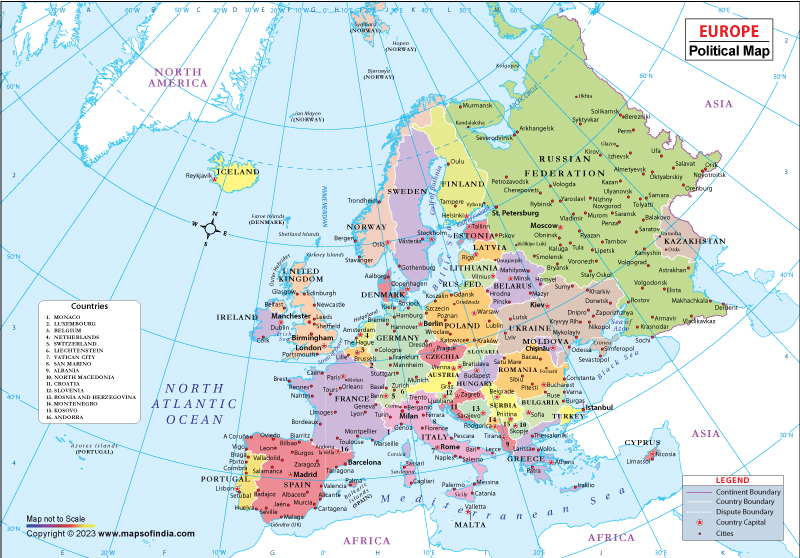Europe is the world's second-smallest continent, covering approximately 10.18 million square kilometers and home to over 740 million people. It is situated in the Atlantic Ocean to the western front, and the Northern Hemisphere and surrounded by the Mediterranean Sea to the southern front, the Arctic Ocean to the northern front, and Asia to the eastern front.
History
Europe has a long and complex history dating back to the ancient civilizations of Greece and Rome. It has been home to many powerful empires, including the Roman Empire, the Holy Roman Empire, and the British Empire. The region has also been a battleground for many conflicts, including World War I and World War II, which had a significant impact on the world.
Culture
Europe is home to a vast array of cultures, each with its own unique customs, traditions, and beliefs. These cultures have been shaped by the region's history, geography, and religions, including Islam, Judaism, Christianity, and paganism. European art, literature, music, and cuisine are also renowned for their distinct styles and flavors.
Language
Europe is home to many different languages, with over 200 different languages spoken across the continent. Some of the most widely spoken languages include English, Spanish, French, German, Italian, and Russian. Many Europeans are multilingual and speak several languages fluently.
Geography
Europe is a diverse continent with a varied landscape that includes mountains, plains, forests, and coastlines. The highest peak in Europe, Mount Elbrus, is located in the Caucasus Mountains in Russia. Other notable geographic features include the Alps in central Europe, the Pyrenees in southern Europe, and the Danube River, which runs through many central and eastern European countries.
| Official Name | Europe |
| Area | 10,180,000 km2 |
| Population | 745173774 |
| Population Density | 72.9 km2 |
| GDP(PPP) | $33.62 trillion |
| Religion | Christianity, Islam |
FAQs
Q1: What is the European Union, and how does it impact the region?
An economic and political union of 27 member nations, most of which are in Europe, makes up the European Union (EU). It was founded in 1993 with the intention of fostering political and economic collaboration among its member nations.
Q2: What is the Renaissance, and how did it impact European culture?
The Renaissance was a period of cultural and intellectual revival that occurred in Europe between the 14th and 17th centuries. It was characterized by a renewed interest in art, literature, science, and philosophy, and was influenced by ancient Greek and Roman culture.
Q3: What is the origin of the Industrial Revolution, and how did it change Europe?
The Industrial Revolution was a period of technological and economic change that occurred in Europe between the 18th and 19th centuries. It was characterized by the development of new technologies, such as the steam engine, and the rise of factories and mass production.
Q4: What is the significance of the Berlin Wall, and how did its fall impact Europe?
Between 1961 till its destruction in 1989, the Berlin Wall served as a dividing line in Berlin. To stop people from emigrating to the West, East Germany's communist authorities built it. The Cold War came to an end with the collapse of the Berlin Wall, and Germany was once again united.
Last Updated on: July 09, 2025
